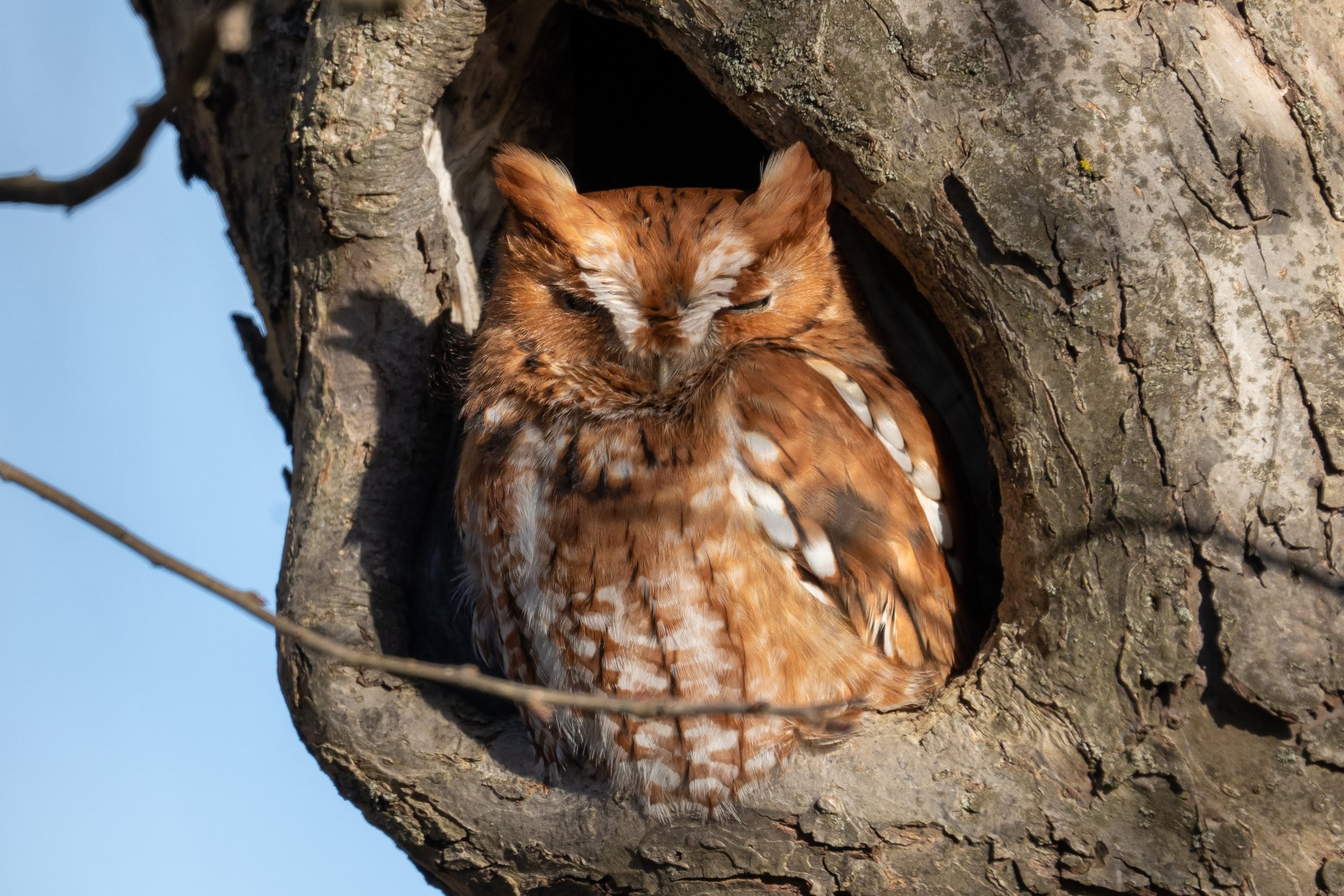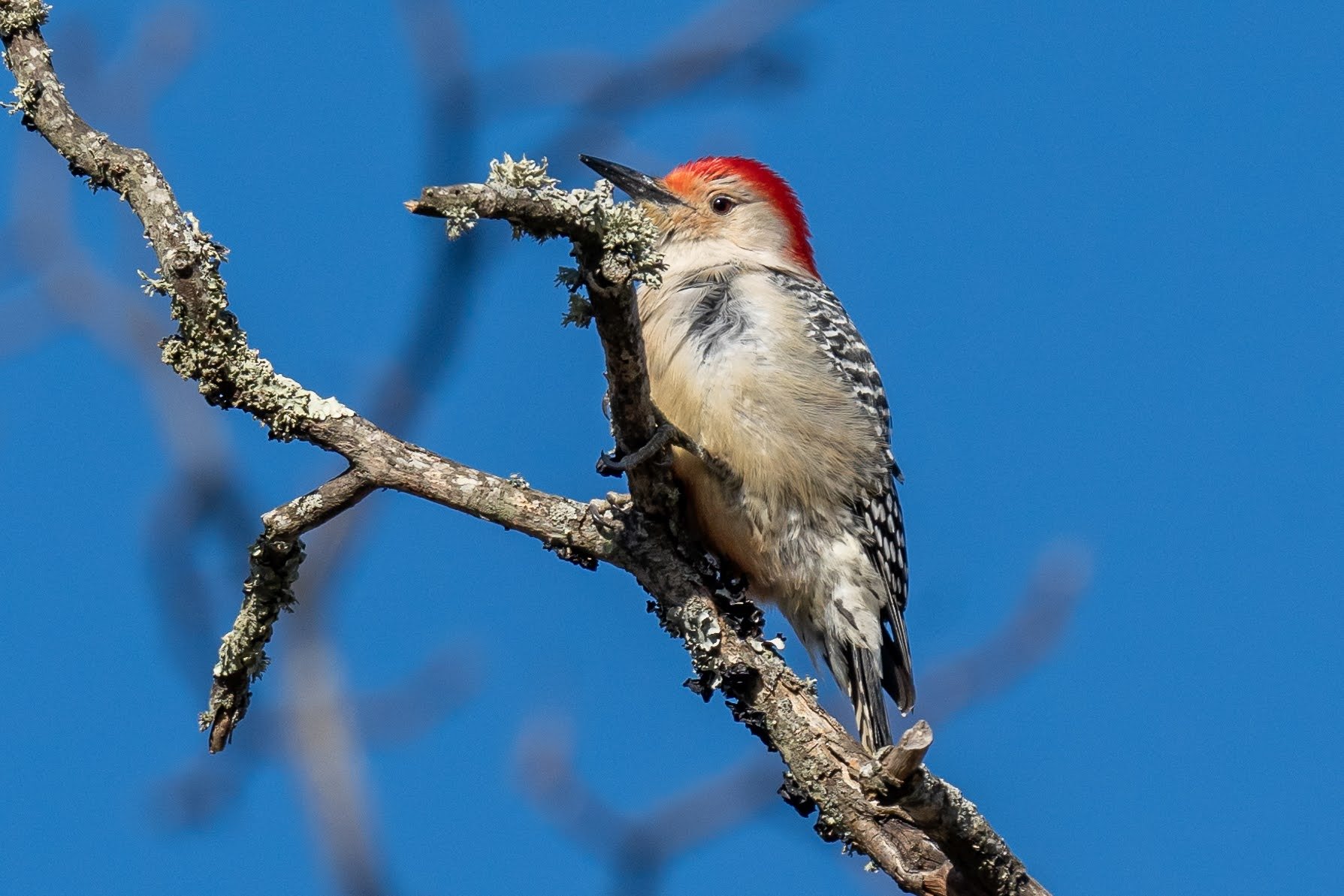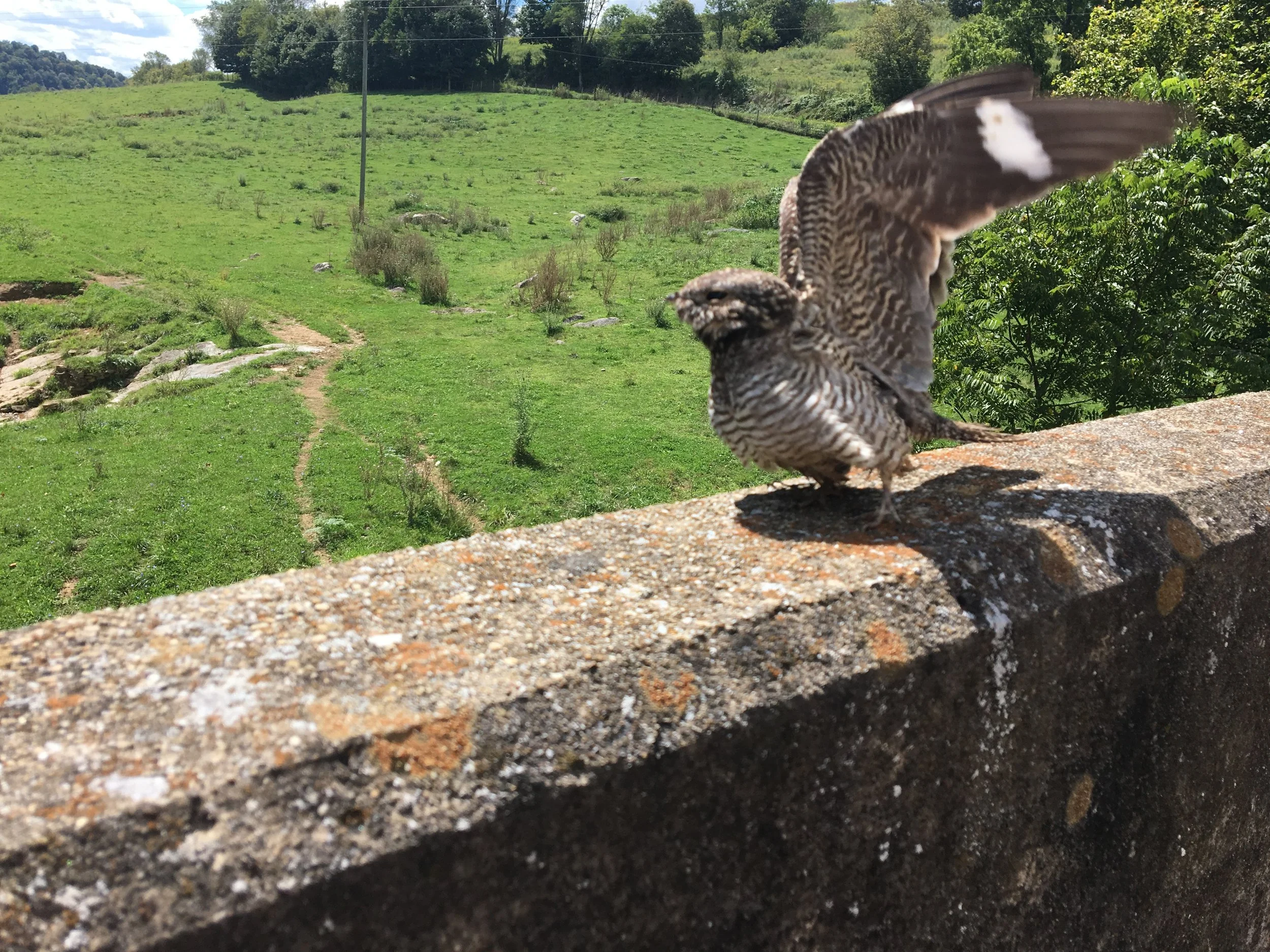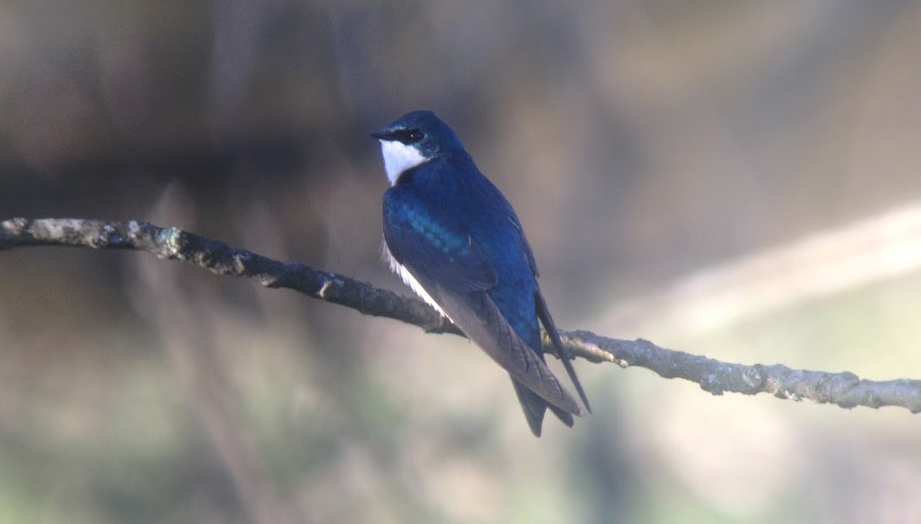

Hootin' in the Holler: Owls of the Blue Ridge
In the Blue Ridge mountains, one silent assassin reigns above all as the king of the night. Can you guess whoooooo?
The owl, of course! Old folklore associations marked owls as creatures of witchcraft and omen, and kinder modern stories characterize them as having great wisdom.
Either way, the impression they’ve left observant humans with for centuries is one of great cunning. Fitting, as owls are some of the most skilled predators in the Blue Ridge. Keep reading for a primer on our native owls!

Little Drummer Boy: The Ruffed Grouse
Ever been in the woods and heard someone trying to start a car? More likely it was just a male ruffed grouse “drumming” by beating its wings back and forth very quickly.

Birding at Burkes Garden
Last weekend, the Blue Ridge Birders and friends traveled to beautiful Burkes Garden looking for raptors and other winter resident birds.

Help Scientists by Collecting Data with the Great Backyard Bird Count
For four days each February, birdwatchers of every skill level can participate in a global event for the love and wellbeing of birds.

BRDC takes on Burkes Garden!
This past Saturday, BRDC staff and friends set off on an expedition to see the superb bird species of Burkes Garden in Tazewell, VA.

Goatsuckers
Inappropriately named, nighthawks are not as nocturnal as once thought nor are they related to hawks.

A Week of Discovery
Thirteen kids joined BRDC at Matthews State Forest Pavilion for Discovery Day Camp.

Birds... Neighbors? Tenants? Friends?
Imagine for a moment, if a friend of yours traveled 2,500 miles by his own power with just the clothes on his back, across mountains, seas, rivers, through storms, dodging danger day in and day out, just to come to your doorstep. What kind of reception would you give him when he arrived after such a journey?

Birding Adventure in the High Country
6 kids went on a gravity-defying adventure in the high country participating in BRDC’s inaugural Ornithology Camp. For four days and three nights, the kids camped out and honed their ornithology skills, searching for bird species that inhabit the diverse appalachian ecosystems of southwest Virginia.

Galax Enrichment Week - Give Me Shelter
For BRDCs Give Me Shelter course, students built and installed nest and roosting boxes for owls, bats, ducks and bluebirds. They learned about nesting strategies, comparing the enormous variety of bird and bat nests, and the importance of incorporating features preferred by the particular bird species, including the entrance hole size, the height at which the box is posted, and the type of habitat surrounding the box.

Nesting Bald Eagles Discovered along the New River in Grayson County, VA!
Every trip outdoors holds an opportunity for discovery, but a trip down the New River always seems to be teeming with wildlife. On this particular trip, Ellie and Roald discovered a successful nesting pair of Bald Eagles! This is a landmark discovery many of us have been looking forward to for years.

Mid April (2015) BRDC Program Notes
In spite of our fickle weather, which is certainly typical, we have managed to increase outdoor activities married to our principles and mission. As well, we continue through Bird Sleuth, to provide teachers with curricula (and moral) support.

Golden-winged Warbler
The golden-winged warbler (Vermivora chrysoptera) is a challenged species on at least two levels. Its preferred habitat of wet, brushy, early successional open areas with available perching trees is disappearing, which has contributed to the decline of this species, placing it in the ‘species of concern’ category by the US Fish and Wildlife Service.

Bird Sleuth at Grayson County High School
In consideration of spending more time outdoors, and that we are studying birds, the BRDC guides decided to initiate this year’s Bird Sleuth in March, not January, as we did last year

Early Spring Migrants: Birds: Red-winged blackbird
Avian spring migrants come in two categories: Northbound birds and elevation transients or lateral migrators. The second group mostly consists of our high elevation breeders, such as dark-eyed juncos, that drop off the mountain tops for a few winter months in search of easier food, water and in some cases, shelter. Most of us, however, think of the distance travelers, when we talk about spring migration.

Snow and Birds on March 7
Today, March 7, was a good day to stay inside, enjoy the falling snow, and watch the birds. The first unexpected arrivals were red-winged blackbirds, three of them—a female and two first-winter males. The first photo shows the female.

FINALLY...The Elusive Red Crossbill
In the birding world, folks talk about their nemesis bird, the one that got away, that elusive, irritating species that everyone else sees but you. Bragging rights and chest pounding are not uncommon.

Bird Sleuth, chapter one
Bird Sleuth is a program designed by Cornell's Lab of Ornithology (http://www.birds.cornell.edu/Page.aspx?pid=1478). Blue Ridge Discovery Center decided to offer a first run of this investigative and hands-on citizen science project to two classes at Grayson County High School.

Christmas Bird Counts
These annual counts provide a great excuse to get out with friends and freeze. This year was gentler, with much warmer temps and less wind than usual. But the warmer weather seemed to negatively affect the bird numbers and species diversity. I am guessing, but some of my theories are: less need for the birds to form foraging flocks and less elevational migratory movement, both behaviors due to a wider abundance of food and water sources. Regardless, I had a great time on two counts…the New River and the Mount Rogers.

RAPTORS OF HARVEY'S KNOB HAWK WATCH
This project is a partnership with the Community School of Roanoke and Harvey's Knob Hawk Watch. 5th, 6th and 7th graders of the Community School in Roanoke, VA diligently observed and illustrated the raptors at Harvey's Knob Hawk Watch.